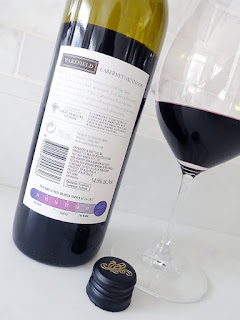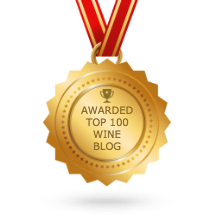red wine review is a delicious blend of 4 varieties from the Cariñena appellation in northeastern Spain. It is a frequent visitor to the LCBO, arriving most recently in last month's LCBO VINTAGES New Release Collection.
It is produced by Grandes Vinos, a grower-driven wine company whose roots go back more than half a century when winegrowers in the district of Cariñena formed five cooperatives between 1950 and 1967. This passion for wine and everything that surrounds it were the beginnings of Grandes Vinos, which was officially formed in 1997.
Today, Grandes Vinos is the union of more than 700 families of winegrowers who share their hard work and know-how to create wines that combine tradition and innovation, and have no borders. The winegrowers are the protagonists, ensuring that the legacy of Cariñena lives on today and is passed down from one generation to the next. To speak of Grandes Vinos is to speak of a unique land, of tradition, of sunshine, of rain, of effort and dedication, and, of course, passion. For their protagonists, vine growing is not only a passion, but a way of life.
Cariñena is the only land in the world that gives its name to a grape varietal - Cariñena - which is also known as Carignan. The land of Cariñena is a territory that treasures old vineyards at different altitudes, soil with ancient stones, and a strong, dry wind (El Cierzo) that gives personality to the wine. Cariñena, the land, has been linked to wine since the Romans of the 3rd Century B.C., when they mixed wine with honey. Today, Grandes Vinos has over 4,500 hectares of vineyards of all ages (some over 100 years old) located in the foothills of the Iberian sierras of Algairén and Pecos, and between the rivers Huerva and Jalón, at altitudes between 320 and 850 metres above sea level. The land below these vineyards is made up of age-old stony soil, with layers of rocks and earth.
Grandes Vinos produces many wines under several different and unique brands, with this particular wine bottled under their Monasterio de las Viñas range - their Spanish brand which has the greatest international presence. The fruit for all Monasterio de las Viñas wines come exclusively from vineyards in the municipality of Aguarón, one of the highest areas and with the highest quality production of Cariñena PDO wines. The wines of Monasterio de las Viñas are produced mainly using indigenous varieties and pay homage to the famous Monasterio de las Viñas that was built by Cistercian monks in the 11th century. The monastery was erected in a privileged place in the Sierra de Aguarón, and whose widespread notoriety is in turn attributed to its spirituality as well as the great quality of its wines.
This particular red wine is a blend of Garnacha (Grenache), Tempranillo, Cariñena (Carignan), and Cabernet Sauvignon that was grown in Aguarón, in the province of Zaragoza, Aragon, in northeastern Spain. These vineyards are more than 30 years old and feature clayey clear soil with stones on the upper substrates. The grapes were traditionally vinified, then aged for 12 months in 70% American and 30% French oak barrels.
The 2020 vintage was a difficult one in Spain, not only due to the fall-out from COVID, but also from the growing season, which began with an unusually wet but warm spring, which brought humidity and any associated disease problems. Producers that remained vigilant in managing mildew produced quality fruit. Hot weather eventually arrived, which helped the grapes dry out and rid them of disease, while allowing the grapes to reach phenolic ripeness ahead of time, which led to an earlier than normal harvest. From a good vintage that produced wines with elegance, let's see how this 2020 red blend from the Cariñena appellation in Spain is tasting tonight...
The medium+ to medium-high intensity nose offers a lovely mix of ripe red cherry, dried herbs, dark berry, fine wood spice, and chocolate aromas nuanced with touches of dried rose floral, dried cherry, and sweet spices. The medium+ weighted palate is dry and quite ripe with delicious red & black cherry, wood spice, coconut, vanilla, and dried herb flavours supported by juicy, well-balanced acidity and fine, dusty textured tannins. It's nicely balanced throughout with savoury, earthy oak, and coconut notes on the lengthy finish. Highly recommended buy! Score: 89 pts
A couple of other wines from Monasterio de las Viñas brand are available at the LCBO, while the full range can be ordered through their Agent - Noble Estates Wines & Spirits.
It is produced by Grandes Vinos, a grower-driven wine company whose roots go back more than half a century when winegrowers in the district of Cariñena formed five cooperatives between 1950 and 1967. This passion for wine and everything that surrounds it were the beginnings of Grandes Vinos, which was officially formed in 1997.
Today, Grandes Vinos is the union of more than 700 families of winegrowers who share their hard work and know-how to create wines that combine tradition and innovation, and have no borders. The winegrowers are the protagonists, ensuring that the legacy of Cariñena lives on today and is passed down from one generation to the next. To speak of Grandes Vinos is to speak of a unique land, of tradition, of sunshine, of rain, of effort and dedication, and, of course, passion. For their protagonists, vine growing is not only a passion, but a way of life.
Cariñena is the only land in the world that gives its name to a grape varietal - Cariñena - which is also known as Carignan. The land of Cariñena is a territory that treasures old vineyards at different altitudes, soil with ancient stones, and a strong, dry wind (El Cierzo) that gives personality to the wine. Cariñena, the land, has been linked to wine since the Romans of the 3rd Century B.C., when they mixed wine with honey. Today, Grandes Vinos has over 4,500 hectares of vineyards of all ages (some over 100 years old) located in the foothills of the Iberian sierras of Algairén and Pecos, and between the rivers Huerva and Jalón, at altitudes between 320 and 850 metres above sea level. The land below these vineyards is made up of age-old stony soil, with layers of rocks and earth.
Grandes Vinos produces many wines under several different and unique brands, with this particular wine bottled under their Monasterio de las Viñas range - their Spanish brand which has the greatest international presence. The fruit for all Monasterio de las Viñas wines come exclusively from vineyards in the municipality of Aguarón, one of the highest areas and with the highest quality production of Cariñena PDO wines. The wines of Monasterio de las Viñas are produced mainly using indigenous varieties and pay homage to the famous Monasterio de las Viñas that was built by Cistercian monks in the 11th century. The monastery was erected in a privileged place in the Sierra de Aguarón, and whose widespread notoriety is in turn attributed to its spirituality as well as the great quality of its wines.
This particular red wine is a blend of Garnacha (Grenache), Tempranillo, Cariñena (Carignan), and Cabernet Sauvignon that was grown in Aguarón, in the province of Zaragoza, Aragon, in northeastern Spain. These vineyards are more than 30 years old and feature clayey clear soil with stones on the upper substrates. The grapes were traditionally vinified, then aged for 12 months in 70% American and 30% French oak barrels.
The 2020 vintage was a difficult one in Spain, not only due to the fall-out from COVID, but also from the growing season, which began with an unusually wet but warm spring, which brought humidity and any associated disease problems. Producers that remained vigilant in managing mildew produced quality fruit. Hot weather eventually arrived, which helped the grapes dry out and rid them of disease, while allowing the grapes to reach phenolic ripeness ahead of time, which led to an earlier than normal harvest. From a good vintage that produced wines with elegance, let's see how this 2020 red blend from the Cariñena appellation in Spain is tasting tonight...
Tasting Note:
MONASTERIO DE LAS VIÑAS RESERVA GARNACHA / TEMPRANILLO / CARIÑENA / CABERNET SAUVIGNON 2020 - DO Cariñena, Spain (#166579) (XD) - $16.95The medium+ to medium-high intensity nose offers a lovely mix of ripe red cherry, dried herbs, dark berry, fine wood spice, and chocolate aromas nuanced with touches of dried rose floral, dried cherry, and sweet spices. The medium+ weighted palate is dry and quite ripe with delicious red & black cherry, wood spice, coconut, vanilla, and dried herb flavours supported by juicy, well-balanced acidity and fine, dusty textured tannins. It's nicely balanced throughout with savoury, earthy oak, and coconut notes on the lengthy finish. Highly recommended buy! Score: 89 pts
A couple of other wines from Monasterio de las Viñas brand are available at the LCBO, while the full range can be ordered through their Agent - Noble Estates Wines & Spirits.











































